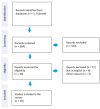Uncommon Haemorrhagic Cystitis of Infectious Origin: A Narrative Review for Urologists
- PMID: 37564174
- PMCID: PMC10411501
- DOI: 10.2147/RRU.S412278
Uncommon Haemorrhagic Cystitis of Infectious Origin: A Narrative Review for Urologists
Abstract
Purpose: Haemorrhagic cystitis may be due to different etiologies with infectious diseases representing an insidious cause to diagnose. The aim of this narrative review is to provide a comprehensive overview of less common but difficult-to-diagnose causes of infectious haemorrhagic cystitis of bacterial, mycobacterial, and parasitic origin, Moreover, we highlight possible diagnostic tools and currently available treatment options in order to give an updated tool for urologists to use in daily practice.
Patients and methods: The search engine PubMed was used to select peer-reviewed articles published from 1/Jan/2010 to 31/Aug/2022.
Results: Bacteria, fungal, TB and schistosomiasis are uncommon causes of haemorrhagic cystitis burdened by high morbidity, especially if not promptly diagnosed.
Conclusion: Because haemorrhagic cystitis ranges in severity from mild dysuria associated with pelvic discomfort to severe life-threatening haemorrhage, punctual diagnosis, and immediate treatment are essential to avoid further complications.
Keywords: GUTB; cystitis; haemorrhagic cystitis; schistosomiasis; tuberculosis.
© 2023 Ambrosini et al.
Conflict of interest statement
The authors report no conflicts of interest in this work.
Figures
References
-
- Laguna MP, Albers P, Algaba F. EAU guidelines. Edn. Presented at the EAU Annual Congress Amsterdam 2022. ISBN 978-94-92671-16-5; 2022.


